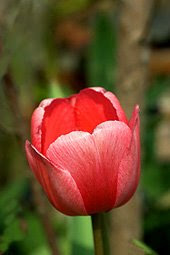
I know that some photographers are very reluctant to do any post processing. I am not going to tell them they are wrong. I am not going to explain that post processing is exactly what the photo lab did when they developed your film in the old days. I am not going to tell them it’s okay to correct for the minor imperfections of their gear. It’s a waste of time and energy, they will most certainly not listen. Somehow, these people got the silly idea that the 0’s and 1’s on their chip are the truth, the whole truth and nothing but the truth, and that post processing implies that the truth is altered. They will stick to this idea, and they are entitled to their mistake.
Too bad for them, they are missing out on an easy opportunity to enhance the quality of their pictures. This article describes some basic tips that help improving pictures. Nothing big, no great secrets revealed here, no magic way to recover a bad picture. In fact, post processing can hardly ever be used to make a bad pic into a good one. But you can make your nice picture pop, and have it draw attention. The article draws on the use of Photoshop Elements, but the same techniques may be used in Photoshop CS, Paint Shop Pro, Gimp and many other programs. The terms used may be slightly different though.
Too bad for them, they are missing out on an easy opportunity to enhance the quality of their pictures. This article describes some basic tips that help improving pictures. Nothing big, no great secrets revealed here, no magic way to recover a bad picture. In fact, post processing can hardly ever be used to make a bad pic into a good one. But you can make your nice picture pop, and have it draw attention. The article draws on the use of Photoshop Elements, but the same techniques may be used in Photoshop CS, Paint Shop Pro, Gimp and many other programs. The terms used may be slightly different though.
 Increase contrast
Increase contrastMost lenses (except the very good ones) loose some contrast on the way from the actual thing to the picture on your chip. You will have to bring it back in post processing. Simply create a levels adjustment layer (using curves is fine too, but they require an add-on in Elements). You will now see a histogram. Check if there is some ‘empty room’ to the sides of the histogram and slide the white and black point towards the ends of the histogram. You can slide both sides up to 20 points further, depending on the steepness of the outer slopes of the histogram. The higher contrast will make the pic look stronger and sharper. Make sure to check your highlights. If they get burned, slide the white point a little further to the right or use a grey brush on the mask to apply the levels selectively.
 Increase saturation
Increase saturationLike in the case of contrast, some lenses loose some of the color in your original. Again, you can use post processing to bring it back. You may even want to exaggerate a little, provided you have your white balance correct. Increasing saturation by 10 to 20 percent should do the trick. Like before, check your highlights. Increasing saturation may cause burning highlights as well.
 Sharpen
SharpenFinally, sharpen your picture, either using USM or the simple sharpen tool. There is no fundamental difference between them. USM gives you a little more control, but I find the sharpen tool to be accurate most of the time. If you use a prime or a very good zoom, there will be no need to sharpen at full size. As soon as you resize the pic however, some sharpness may be lost, and you need to reintroduce it. You can sharpen more than once, but forget about saving a pic that is blurred by camera shake. Sharpening should be done at the final stage of post processing to prevent jpg-artifacts. This holds especially for saving (as .jpg) and resizing.
More resources:
Levels versus Curves
Understanding histograms
Some nice-to-know reading about photo manipulation
No comments:
Post a Comment